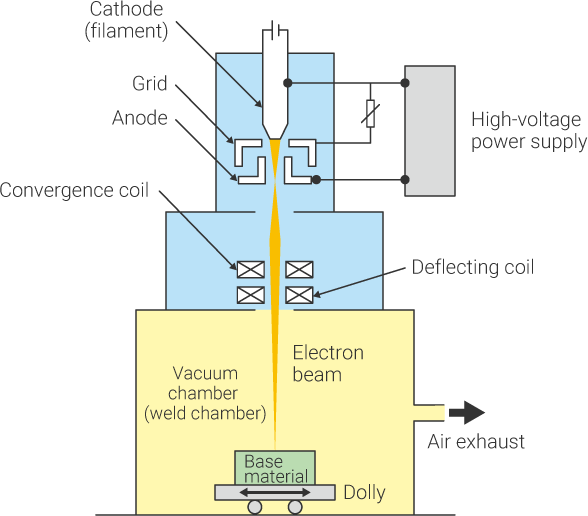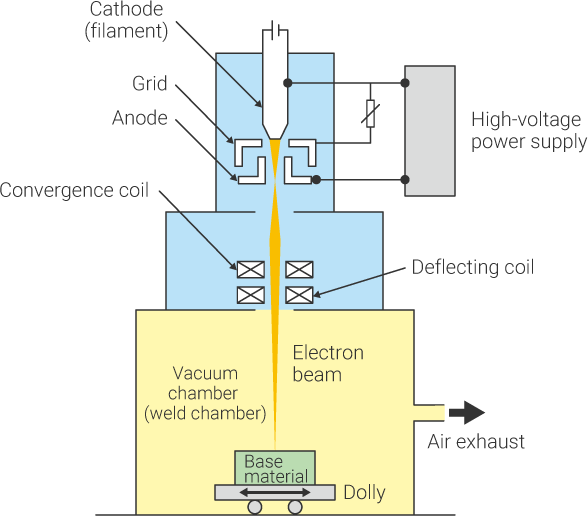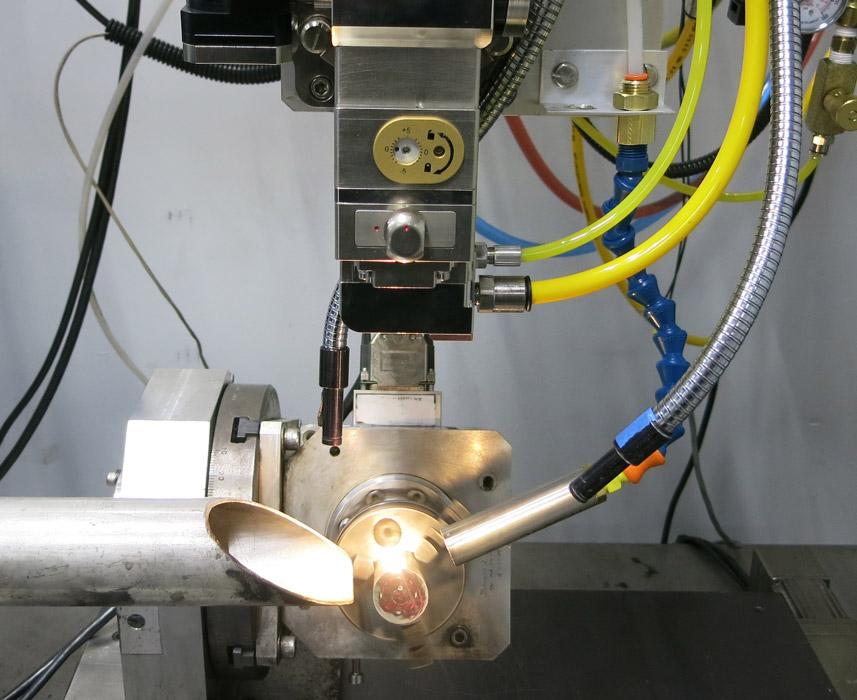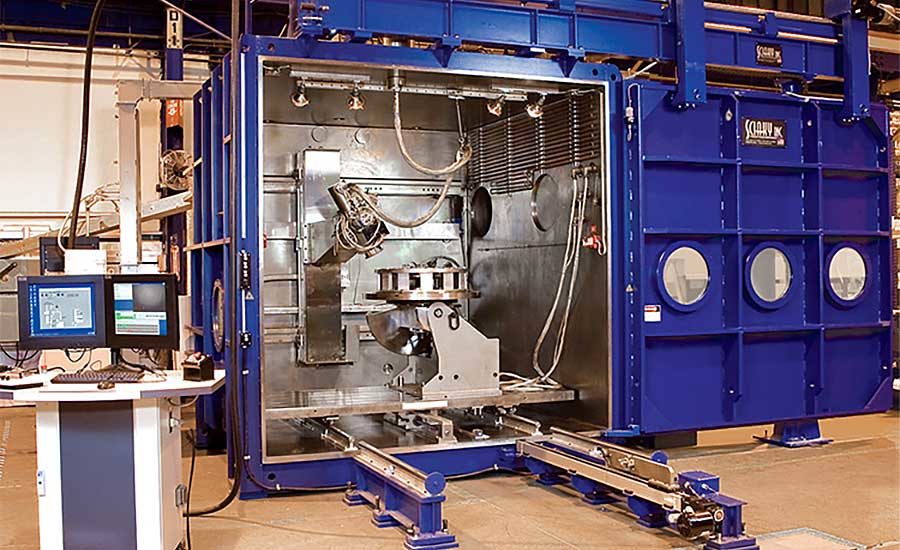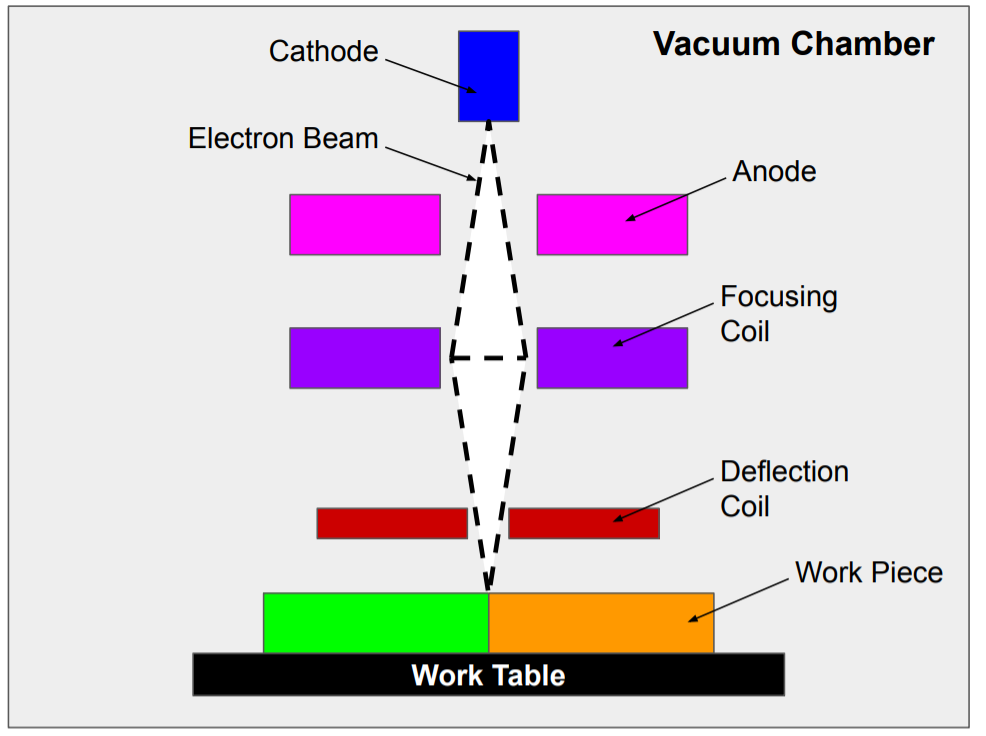In this article, we will explore the numerous advantages that come with utilizing electron beam welding in the realm of vacuum welding. With its remarkable precision and ability to join materials with minimal distortion, electron beam welding has become an increasingly popular technique for achieving superior weld quality. By examining its benefits, we hope to shed light on why this method has gained such recognition and how it can greatly enhance the efficiency and effectiveness of vacuum welding processes.
Review contents
High Precision Welding
Precise heat control
One of the major advantages of electron beam welding is its ability to provide precise heat control. The electron beam can be focused and controlled with a high degree of accuracy, allowing for precise heat input to the weld zone. This level of heat control ensures that the weld metal reaches the desired temperature without causing excessive heat buildup in the surrounding material. As a result, the risk of overheating and distortion is minimized, leading to high precision welding.
Minimal distortion
The precise heat control offered by electron beam welding also contributes to minimal distortion during the welding process. Traditional welding methods often result in significant distortion due to the high heat input and the subsequent expansion and contraction of the material. However, with electron beam welding, the concentrated heat input minimizes the overall heat affected zone, reducing the chances of distortion. This is particularly important when working with delicate or thin materials where distortion can compromise the integrity of the final product.
Narrow weld seam
Electron beam welding is known for its ability to produce narrow weld seams. The focused nature of the electron beam allows for a concentrated heat input, resulting in a fine and precise weld seam. This narrow weld seam is particularly beneficial in applications where aesthetic appeal is important, as it helps achieve a clean and seamless appearance. Additionally, narrow weld seams can also contribute to increased structural integrity, as the smaller heat-affected zone reduces the likelihood of stress concentration and potential failure points.
Deep Penetration Welds
High depth-to-width ratio
Electron beam welding is capable of achieving high depth-to-width ratios in weld joints. This means that the weld penetrates deep into the material with minimal spreading. The deep penetration ensures a strong bond between the joined materials and improves the overall strength of the weld joint. This makes electron beam welding a preferred choice for applications where superior joint strength is crucial, such as in the automotive and aerospace industries.
Stronger weld joints
The deep penetration achieved by electron beam welding results in stronger weld joints compared to other welding methods. The high depth-to-width ratio ensures a larger fusion zone, allowing for a greater metallurgical bond between the joined materials. This enhanced bond strength contributes to improved structural integrity and durability of the welded components. Whether it is joining dissimilar metals or thick sections, electron beam welding provides the strength necessary to withstand demanding service conditions.
Reduced need for post-welding processes
The inherent characteristics of electron beam welding, such as deep penetration and minimal distortion, often eliminate the need for extensive post-welding processes. With traditional welding techniques, additional steps such as grinding, smoothing, or machining may be required to remove excess material or correct distortion. However, electron beam welding produces high-quality welds with minimal defects, reducing the need for these time-consuming and costly post-welding operations. This not only saves time and resources but also streamlines the overall manufacturing process.
This image is property of www.keyence.com.
High Welding Speed
Efficient and quick process
One of the remarkable advantages of electron beam welding is its high welding speed. The electron beam can be rapidly moved across the workpiece, delivering a significant amount of heat in a short period. This efficiency makes electron beam welding a time-saving process, especially when compared to manual welding techniques. The ability to quickly produce quality welds translates to increased productivity and shorter production cycles, ultimately benefiting industries that require high-volume production.
Reduced production time
By harnessing the high welding speed of electron beam welding, manufacturers can significantly reduce production time. The ability to complete welds quickly allows for faster assembly and fabrication of components. This accelerated production timeline is particularly advantageous in industries where time-to-market is critical, such as the automotive or consumer electronics sectors. Electron beam welding offers an efficient solution to meet the demands of fast-paced manufacturing environments.
Increased productivity
With its quick and efficient process, electron beam welding improves productivity in various industries. By reducing the welding cycle time, manufacturers can increase the number of components produced within a given timeframe. This increased productivity not only leads to higher output but also allows businesses to meet customer demands more effectively. Electron beam welding’s ability to facilitate high-volume production ensures that manufacturers can stay competitive and meet market demands in a timely manner.
Minimal Heat-Affected Zone
Limited material distortion
One of the key benefits of electron beam welding is the minimal heat-affected zone (HAZ) it generates. The focused heat of the electron beam results in less heat transfer to the surrounding material, thereby reducing the HAZ. This limited heat input minimizes the risk of material distortion, ensuring that the welded components maintain their original shape and dimensions. Industries that work with sensitive or intricate parts can rely on electron beam welding to preserve the integrity of their materials.
Preservation of material properties
The minimal heat-affected zone achieved through electron beam welding allows for the preservation of material properties. Traditional welding methods often lead to changes in the material’s microstructure, which can have adverse effects on its strength, hardness, or corrosion resistance. However, electron beam welding’s concentrated heat input minimizes these material alterations, ensuring that the welded components retain their desired mechanical properties. This preservation of material properties is critical in applications where the material’s original characteristics are crucial to the component’s performance.
Enhanced structural integrity
With its ability to minimize the heat-affected zone and preserve material properties, electron beam welding contributes to enhanced structural integrity. The limited distortion and retained properties of the welded materials ensure that the joint maintains its strength and durability. This increased structural integrity is vital in industries where safety and reliability are of utmost importance, such as aerospace, nuclear, or automotive. Electron beam welding provides a reliable solution for creating structurally sound weld joints that can withstand demanding operating conditions.
This image is property of cdn.thefabricator.com.
Welding of Dissimilar Metals
Capability to join different materials
One of the standout features of electron beam welding is its capability to join dissimilar metals. Different metals often have varying melting points and thermal conductivity, making it challenging to weld them using traditional methods. However, electron beam welding’s precise heat control and deep penetration capabilities enable the successful joining of dissimilar metals. This capability opens up a wide range of possibilities in industries where the combination of different materials is necessary, such as in the manufacturing of hybrid vehicles or specialized equipment.
Versatility in applications
The ability to weld dissimilar metals gives electron beam welding a significant advantage in terms of versatility. Industries that require the utilization of multiple materials can benefit greatly from electron beam welding’s capability to create strong, reliable joints between different metals. Whether it is combining aluminum and steel for lightweight structures or joining stainless steel and titanium for medical implants, electron beam welding ensures that the final product exhibits the desired mechanical properties and functional characteristics.
Expansion of design possibilities
Electron beam welding’s versatility in joining dissimilar metals also opens up a realm of design possibilities. Different materials possess unique properties and characteristics, and being able to combine them effectively allows for innovative and efficient designs. Manufacturers can explore new approaches and develop components or structures that maximize the benefits of each material. The ability to weld dissimilar metals through electron beam welding broadens the horizons for engineers and designers, encouraging creativity and pushing the boundaries of what is possible.
Vacuum Environment Benefits
Improved cleanliness of weld joint
Electron beam welding performed in a vacuum environment offers the advantage of an improved cleanliness of the weld joint. The absence of air and other contaminants in the vacuum chamber eliminates the risk of oxidation, which can lead to poor weld quality or material degradation. By welding in a clean, controlled environment, manufacturers can ensure that the integrity and cleanliness of the weld joint are maintained. This is particularly important in industries where contamination-free welds are crucial, such as in semiconductor manufacturing or aerospace applications.
Elimination of oxidation and contamination
The vacuum environment in electron beam welding eliminates the presence of oxygen and other potential contaminants in the weld zone. Oxidation, which can occur when metals react with oxygen, can weaken the weld joint or compromise its structural integrity. By welding in a vacuum, electron beam welding prevents oxidation, ensuring that the weld seam retains its strength and integrity. Additionally, the absence of contaminants reduces the risk of weld defects, resulting in high-quality, reliable welds.
Enhanced metallurgical properties
Welding in a vacuum environment offers the added benefit of enhanced metallurgical properties in the weld joint. Without the presence of oxygen or other impurities, the molten metal undergoes solidification in a controlled environment, leading to improved grain structure and mechanical properties. The resulting weld exhibits superior strength, better fatigue resistance, and improved corrosion resistance. Industries that require weld joints with exceptional metallurgical properties can rely on electron beam welding in a vacuum environment to meet their stringent requirements.
This image is property of www.assemblymag.com.
Reduced Weld Defects
Minimal porosity and gas entrapment
Electron beam welding boasts minimal porosity and gas entrapment in the weld, resulting in high-quality, defect-free welds. Porosity refers to the presence of small voids or gas pockets within the weld metal, which can compromise the weld’s mechanical properties. However, the focused nature of the electron beam ensures efficient heat transfer, minimizing the chances of gas entrapment. This leads to solid and dense welds, free from unsightly voids or pores. The absence of porosity and gas entrapment contributes to the overall integrity and reliability of the welded components.
Lower risk of cracking or splattering
Another advantage of electron beam welding is the lower risk of cracking or splattering during the welding process. Cracks in weld joints can significantly weaken the structure and compromise its performance. However, electron beam welding’s controlled heat input and deep penetration capabilities reduce the risk of crack formation. The concentrated heat allows for efficient fusion of the materials, while the limited heat-affected zone minimizes the stress buildup that often leads to cracking. This ensures that the welded components maintain their structural integrity and possess a superior resistance to failure.
Improved weld quality control
Electron beam welding’s ability to produce welds with minimal defects contributes to improved weld quality control. The precise control over welding parameters in electron beam welding, such as beam intensity and scanning speed, allows manufacturers to consistently produce welds of high quality. The reduced incidence of defects and the predictable weld characteristics ensure that the final product meets the specified requirements and adheres to industry standards. This level of weld quality control is essential for industries that prioritize consistency and reliability, such as the automotive or medical equipment manufacturing sectors.
Automation and Precision Control
Highly automated process
Electron beam welding is a highly automated process, offering numerous advantages over manual welding techniques. The automation aspect of electron beam welding allows for consistent and repeatable welds. The welding parameters, such as beam energy and traverse speed, can be precisely controlled and programmed into the system. This eliminates the variability and inconsistencies associated with manual welding, ensuring that each weld is identical in quality and strength. The automation of electron beam welding also reduces the reliance on skilled welders, making it an efficient and cost-effective solution.
Precise control over welding parameters
Electron beam welding provides precise control over welding parameters, allowing manufacturers to tailor the welding process to their specific requirements. The energy of the electron beam, the scanning speed, and the beam focus can all be adjusted to achieve the desired weld characteristics. This level of control enables welds of varying depth, width, and penetration, making electron beam welding adaptable to different applications and materials. Precise control over the welding parameters also ensures that the weld joints meet the specified standards and possess the desired mechanical properties.
Consistent and repeatable weld results
The combination of automation and precise control in electron beam welding results in consistent and repeatable weld results. Unlike manual welding, which can be influenced by human factors and operator skill, electron beam welding delivers welds of consistent quality regardless of the operator. Each weld is performed with identical parameters, ensuring that the weld joint’s strength, integrity, and dimensions remain constant. The ability to consistently produce high-quality welds allows manufacturers to maintain strict quality standards and meet customer expectations consistently.
This image is property of res.cloudinary.com.
Cost-Effective Solution
Reduction in material waste
Electron beam welding offers a cost-effective solution by minimizing material waste during the welding process. The focused and controlled heat input of the electron beam ensures that only the necessary areas are heated, reducing the amount of material affected by the welding process. This results in less material waste compared to traditional welding methods, where excess metal may need to be removed through cutting or grinding. The reduction in material waste translates to cost savings for the manufacturer, as fewer raw materials are required for the production of high-quality welds.
Lower energy consumption
Electron beam welding also contributes to cost savings through its lower energy consumption compared to other welding techniques. The electron beam can provide a highly concentrated heat source, allowing for efficient energy utilization. In contrast, traditional welding methods often use larger heat sources, leading to a higher energy demand. The reduced energy consumption of electron beam welding not only saves costs but also promotes sustainability by minimizing the overall energy footprint of the welding process.
Limited need for post-welding operations
Another aspect of electron beam welding’s cost-effectiveness is the limited need for post-welding operations. Traditional welding methods often require additional steps, such as grinding, smoothing, or machining, to achieve the desired surface finish or dimensional accuracy. However, electron beam welding’s precise heat control and minimized distortion often eliminate the need for these post-welding processes. Not only does this save time and resources, but it also reduces the associated costs. Electron beam welding provides a streamlined and efficient solution that minimizes the overall manufacturing expenses.
Wide Range of Applications
Aerospace and aircraft industry
Electron beam welding finds extensive applications in the aerospace and aircraft industry. The high precision, deep penetration, and minimal heat-affected zone offered by this welding method make it ideal for joining critical components of aircraft structures. Whether it is aircraft engine components, turbine blades, or fuel tanks, electron beam welding ensures the production of high-quality, reliable welds that meet the strict safety requirements of the aerospace industry. Additionally, the ability to weld dissimilar metals expands the possibilities for lightweight design solutions and fuel-efficient aircraft structures.
Medical and healthcare equipment
The medical and healthcare equipment industry benefits greatly from the capabilities of electron beam welding. Electron beam welding’s precise heat control and minimal distortion make it suitable for the fabrication of medical implants, surgical instruments, and diagnostic equipment. The ability to join dissimilar metals and preserve material properties ensures that the final products possess the necessary strength, biocompatibility, and corrosion resistance. Electron beam welding’s contribution to the production of high-quality, safe, and reliable medical devices has made it a trusted method in the healthcare industry.
Power generation and nuclear industry
The power generation and nuclear industry also rely on the advantages of electron beam welding. Components used in power plants and nuclear facilities often require a high level of reliability and resistance to extreme operating conditions. Electron beam welding’s deep penetration and enhanced structural integrity make it suitable for joining components exposed to high temperatures, pressure, or corrosive environments. The reduced weld defects and precise control over welding parameters ensure that critical weld joints within power generation and nuclear infrastructure possess the necessary strength and longevity. Electron beam welding plays a vital role in ensuring the integrity and safety of these vital industries.
In conclusion, electron beam welding offers a wide range of benefits across various industries. Its precise heat control, minimal distortion, and narrow weld seam contribute to high precision welding. The high depth-to-width ratio, stronger weld joints, and reduced need for post-welding processes make it a preferred choice for deep penetration welds. The efficient welding speed, reduced production time, and increased productivity support faster and more streamlined manufacturing processes. The minimal heat-affected zone, preservation of material properties, and enhanced structural integrity ensure the integrity and reliability of weld joints. The capability to weld dissimilar metals, versatility in applications, and expansion of design possibilities open new avenues for innovation. The vacuum environment benefits provide improved cleanliness, elimination of oxidation and contamination, and enhanced metallurgical properties. The reduced weld defects, automation, and precision control contribute to higher weld quality control. The cost-effective solution of electron beam welding involves the reduction of material waste, lower energy consumption, and limited need for post-welding operations. Lastly, its wide range of applications spans the aerospace and aircraft industry, medical and healthcare equipment, and power generation and nuclear industry. Overall, electron beam welding offers a powerful and reliable welding solution with numerous advantages for manufacturers seeking high-quality, efficient, and cost-effective weld joints.
This image is property of www.smlease.com.
